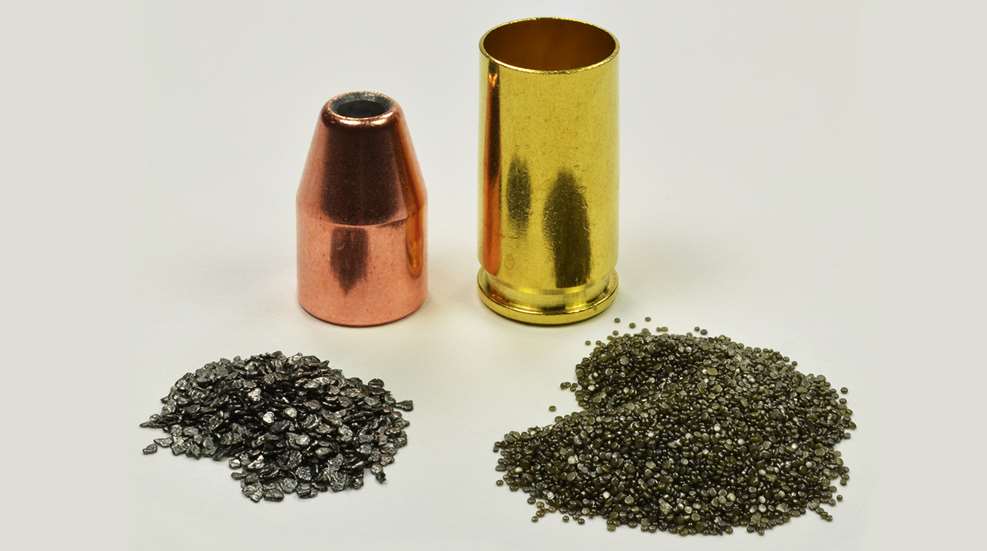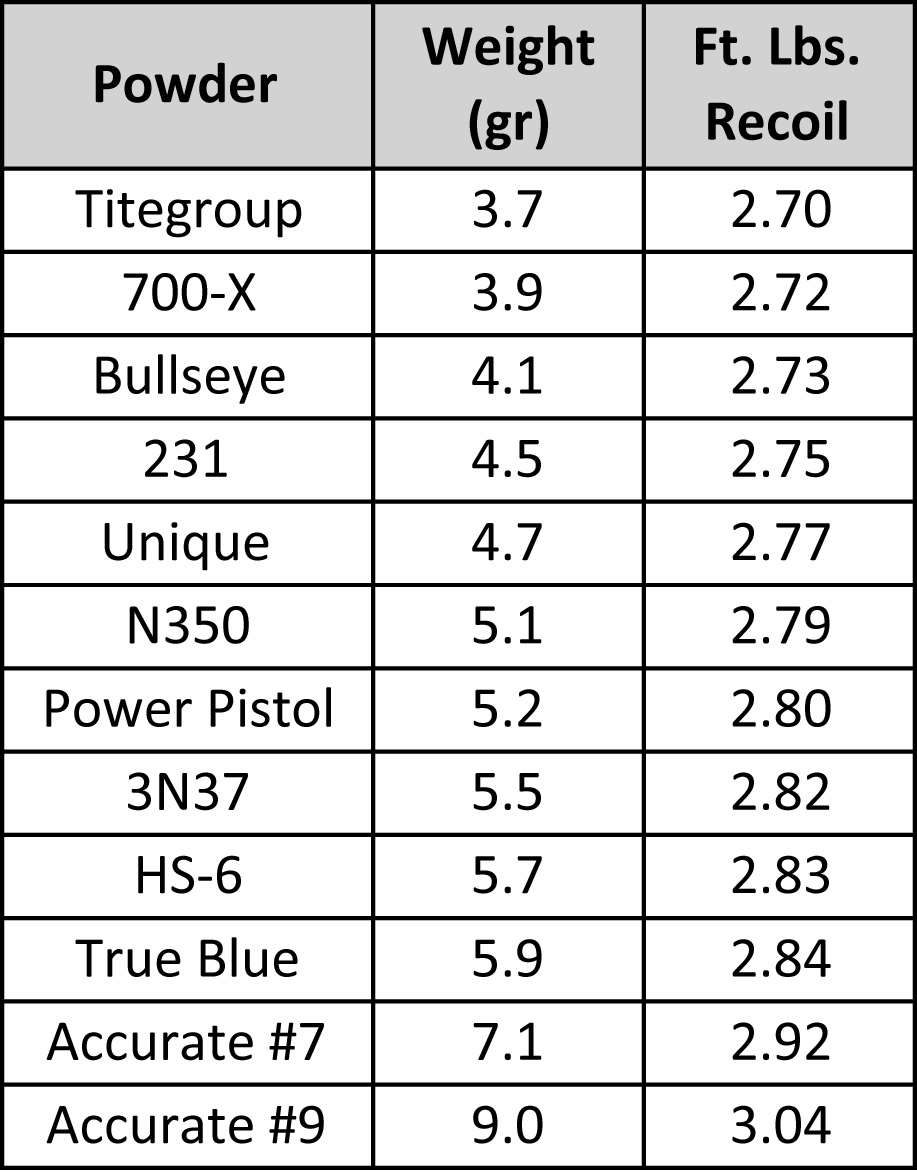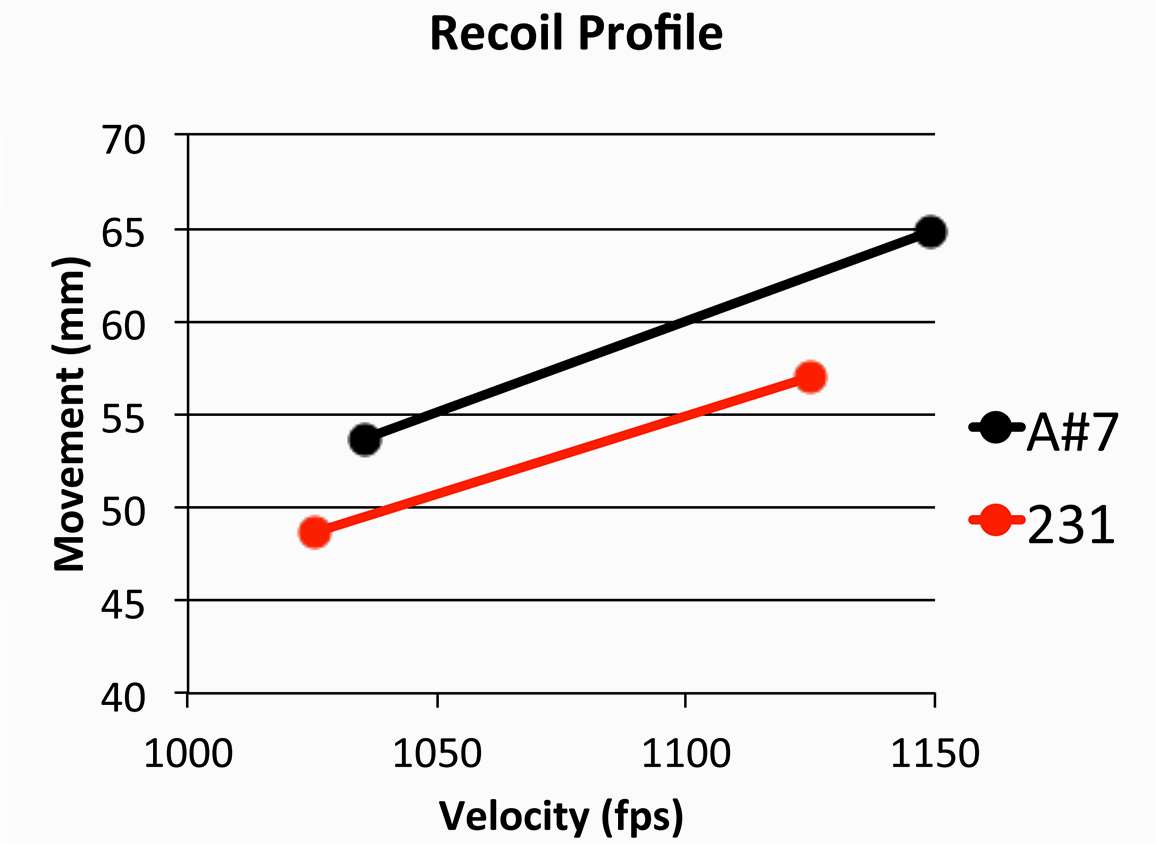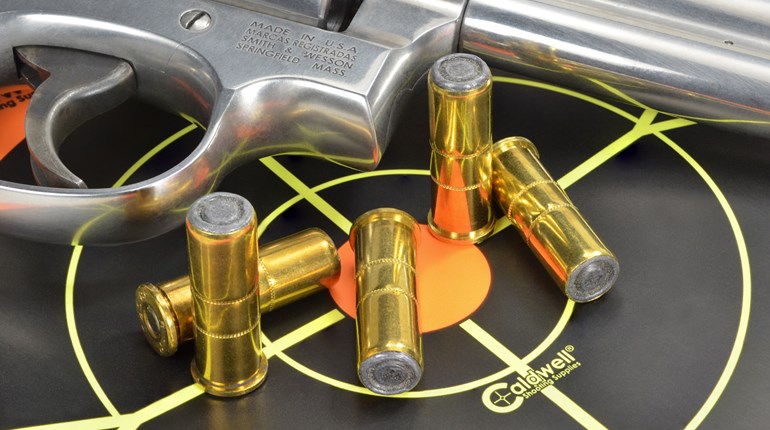
Many competitive shooters load their own ammunition. Handloading allows you to develop accurate, reliable loads custom tailored to your needs. We often select a gunpowder based on its accuracy potential, consistency, cost and cleanliness. There is another factor to consider―recoil.
Recoil is important because it affects our reaction to it. More recoil often means a higher chance of flinching. Generally, we prefer less recoil for this reason. Less recoil is more pleasant, and it allows us to get our sights back on target quicker.
Sometimes we want more recoil to fine-tune reliable function with recoil-operated guns, or for more gas to operate gas-dependent systems which includes gas-operated rifles and compensators on pistols. Whatever the goal, the right amount of recoil can make us, and our gun, perform better.
Gunpowder weight contributes to recoil force through the principle of conservation of mass. The mass of the gunpowder must be considered when calculating recoil force because the gunpowder weight, in the form of gas, also exits the barrel and is part of the ejecta along with the bullet. Newton’s third law of motion, that every action has an equal and opposite reaction, means the gas force going forward produces an equal force going rearward that adds to the recoil force produced by the bullet.
Gunpowders differ with respect to how much recoil they produce because they require different amounts of weight to push the same bullet to the same velocity. More gunpowder for the same velocity means more gas force and more recoil.
The difference in recoil between powders can be a little, or a lot, depending on the difference in weight. Let’s take a look at some numbers to demonstrate the size of these differences. I’ll use an example with a pistol, but the same principle applies to rifles.
Let’s say you’re loading 9 mm Luger with 125-grain bullets and have to make at least a 125 power factor. The velocity needs to be at least 1000 fps. That’s ideal for Bianchi Cup since it has a margin of error of five power factors over the 120 minimum. You want your load to be slightly higher than the minimum to ensure that it makes the minimum power factor when chronographed at a match where they use a different chronograph and might be at different elevations and weather conditions. If you’re minimum power factor is 125, such as the requirement for USPSA and IDPA, you’ll want a power factor around 130. For this example, I’ll stick with a 125 power factor.
Recoil is easily calculated, and there are several calculating programs online, such as these:
- kwk.us/recoil.html
- shooterscalculator.com/recoil-calculator.php
- handloads.com/calc/recoil.asp
- http://www.jbmballistics.com/ballistics/calculators/help/recoil/recoil_exp.shtml
There is a difference of opinion on just how much speed should be attributed to the gas exiting the barrel. I won’t go into those here. There is some discussion at the kwk.us link listed above. For this example, I’ll use a 1.5X factor for the gas speed—1.5 times faster than the bullet speed. (This means that a grain of gunpowder contributes a little more recoil force than a grain of bullet weight because the gas is escaping faster.)
I used load data from the Sierra Reloading Manual 5th Edition listed for 125- and 130-grain bullets in the 9 mm Luger. I selected a dozen powders with different charge weights from their list of 23. They cover a wide range of burning rates from fast to slow, and used their charge weights for 1000 fps.

The difference in recoil between powders is real and can be measured. The graph shows the recoil profiles of two powders, Winchester 231 and Accurate #7, shooting the same 124-grain bullet from a 9 mm Glock 19. Recoil is measured as movement of the rocker arm that holds the gun on a Ransom Rest. The rocker arm pivots when the gun fires and moves farther with heavier recoil.

The upper line shows rocker arm movement after firing with Accurate #7, and the lower line shows rocker arm movement after firing with 231. The fact that the Accurate #7 line is above the 231 line means that Accurate #7 produced more recoil.
Gunpowders also differ in the amount of noise, muzzle blast and fireball. These affect people differently, but can affect our perception of recoil as much as differences in recoil force.
People shooting handguns without compensators generally prefer powders that require a small charge weight to keep recoil low. But shooters using handguns with a compensator often prefer powders that require heavier charge weights because they produce more gas, and therefore more gas pressure to help reduce felt recoil and muzzle rise.
As most shooters know, it might take some testing to determine what works best for you and your gun, but it’s nice that we have a practical way to control recoil through gunpowder selection. It’s a useful method to find a powder that meets our needs to keep us, and the gun, happy.
All figures and photos by the author.



































